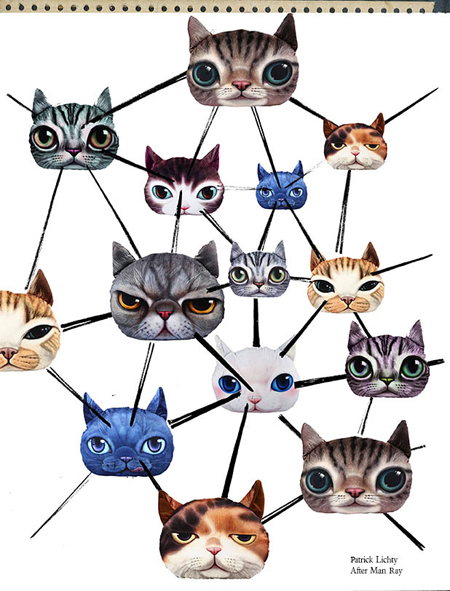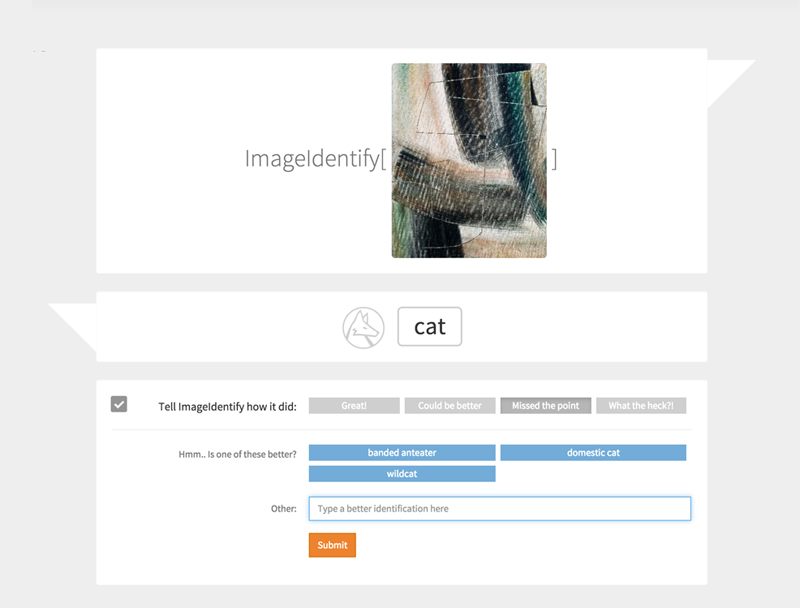Catcus (I am not really confident, but I think it’s a group of men sitting next to a cat.)

JPG file. Based on: Man Ray, Cactus, 1943
Patrick Lichty chose Man Ray’s 1943 Cactus, and with the switching of two letters, updated it for the internet as “Catcus”, also referring to Kurt Scwitters’ 1923 “DadaCats”. The subtitle is the resulting image’s results on Microsoft’s CaptionBot, which seemed amazingly suited to the piece.
Patrick Lichty is an Intermedia artist, curator, and theorist exploring how media shape our perception of reality. He is best known for his work with the virtual reality performance art group Second Front, and the animations with the activist group, The Yes Men. He is a CalArts/Herb Alpert Fellow and Whitney Biennial exhibitor as part of the collective RTMark. He has presented and exhibited internationally at numerous biennials and triennials (Yokohama, Venice, Performa, Maribor, Turin, Sundance), and conferences (ISEA, SIGGRAPH, Popular Culture Association, SLSA, SxSW). His recent book, “Variant Analyses: Interrogations of New Media Culture” was released by the Institute for Networked Culture, and is included in the Oxford Handbook of Virtuality.
Comments closed